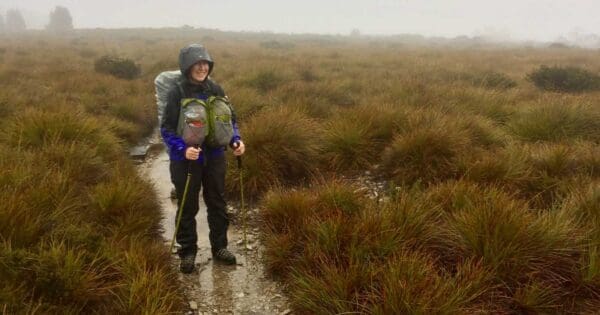Plan every hike as though it is your first
Hiking offers a wonderful opportunity to connect with nature and enjoy stunning landscapes. However, it also comes with its own set of risks and challenges. Whether you’re heading out for a short stroll in your local park or planning a multi-day trek in the wilderness, careful planning is essential. Each hike presents unique variables, and treating every outing as if it’s your first ensures that you’re well-prepared for any scenario. This guide will explore the essential elements of planning a hike, from assessing your fitness level and selecting the right gear to preparing for unforeseen emergencies. With a solid plan in place, you can focus on enjoying the journey while minimising potential hazards.
The Importance of Planning
Planning your hike is the first step to ensuring a safe and enjoyable experience outdoors. Whether you’re hiking alone or with a group, understanding the logistics of your trip can significantly impact your adventure. Here are some key factors to consider:
- Solo or Group Hike: Will you be hiking alone or with friends? This decision influences your planning and preparation.
- Research the Trail: Use a current map and seek advice from experienced walkers or local authorities to understand the trail conditions.
- Know the Environment: Familiarise yourself with the area you’re entering, including the associated risks. Prepare for unexpected situations.
- Emergency Response: Be aware that emergency response and rescue can take time. Always factor in an emergency plan.
- Local Emergency Contacts: Know how to access local emergency services via phone or radio.
- Leave a Trip Plan: Leave a hard copy of your plan in your vehicle and with a reliable contact person.
- Register Your Intentions: Fill out trip intentions books at the start of your trip or in huts if available, and notify your contact person if your plans change.
- Personal Locator Beacon: If you own a Personal Locator Beacon (PLB), ensure it is registered and take it on every remote trip. Register your intentions with the local authorities.
Assess Your Fitness and Experience
Understanding your fitness and experience level is vital for choosing a hike that aligns with your capabilities. Each hiker has unique strengths and limitations, and recognising these can prevent dangerous situations on the trail. Here are some tips for assessing your readiness:
- Consider Your Physical Condition: Be honest about your fitness level and any medical conditions that may affect your hike.
- Know Your Skills: Assess your experience and skills relevant to the area and type of trip you’re planning.
- Navigation Skills: Consider what navigation skills may be required and whether you need to brush up on them before your hike.
- Training Walks: Prepare for your hike by incorporating training walks or exercises tailored to the trail’s difficulty.
- Join Hiking Clubs: Consider joining hiking or bushwalking clubs to gain experience and knowledge from fellow hikers.
Check the Weather Forecast
Weather conditions can change rapidly in the outdoors, so checking forecasts before you head out is essential. Being prepared for extreme weather can make a significant difference in your safety and enjoyment. Consider the following:
- Monitor Weather Changes: Always check the current weather report, but don’t rely solely on it; plan for worst-case scenarios.
- Consider Trip Cancellation: Be prepared to cancel your trip if dangerous weather, such as heatwaves, fires, or floods, is forecasted.
- Mid-Hike Conditions: If weather conditions worsen while you’re on the trail, know where to find shelter or how to turn back safely.
- Last-Minute Checks: Check the weather forecast again closer to your departure time for the most accurate information.
Essential Equipment
Having the right equipment can mean the difference between a pleasant hike and a challenging one. Ensure you carry essential navigation tools and understand how to use them effectively. Here’s what to consider:
- Navigation Tools: Carry maps and a compass, and know how to use them. It’s wise to always have at least two navigation tools, such as a map and compass or GPS.
- Test Your Gear: Before heading out, test your gear to ensure it works properly. Check that your compass is functional, your tent is waterproof, and you know how to operate your navigation tools.
- Create a Checklist: Develop a checklist of essential gear based on the type of hike you’re planning, distinguishing between day hikes and overnight treks.
Food and Water Requirements
Proper hydration and nutrition are critical for maintaining your energy levels while hiking. Here are some tips to ensure you’re well-prepared:
- Hydration: Always carry sufficient water for your trip—more than you think you’ll need, especially in remote areas.
- Natural Water Sources: Don’t rely on creeks for water unless you have reliable information about their safety.
- Water Purification: If hiking near natural water sources, know how to purify water before consumption.
- Pack High-Energy Snacks: Choose snacks that are easy to carry and consume during your hike, ensuring you have enough food for the trip, plus extra in case of emergencies.
Shelter and Clothing
Weather conditions can be unpredictable, so dressing appropriately and carrying extra clothing is crucial. Here’s how to prepare:
- Dress for Conditions: Wear suitable clothing and bring extra layers, including wet-weather gear, to adapt to changing temperatures.
- Layering Techniques: Use layering techniques to easily adjust to temperature changes throughout your hike.
- Test Your Gear: Before your trip, make sure your clothing and gear are comfortable and functional.
Notify Someone Before You Go
Informing someone about your hiking plans is an essential safety measure. Here’s how to ensure you’re covered:
- Leave Trip Intentions: Fill out trip intention forms with someone who can raise the alarm if you do not return on time.
- Choose a Reliable Contact: Select a contact who knows your hiking habits and can act quickly if needed.
- Check In: If possible, regularly check in with your contact during longer hikes.
Final Thoughts
In the world of hiking, preparation is more than just a precaution; it’s the foundation of a successful and enjoyable experience. The tips outlined above will help you plan effectively, whether you’re a seasoned adventurer or just starting. Remember, the great outdoors can be unpredictable, and thorough planning is the best way to navigate its challenges. By treating each hike with the same respect and diligence as your first, you not only safeguard your well-being but also enhance the overall joy of your outdoor adventures. So, lace up your boots, pack your essentials, and confidently embrace the wonders of nature.





